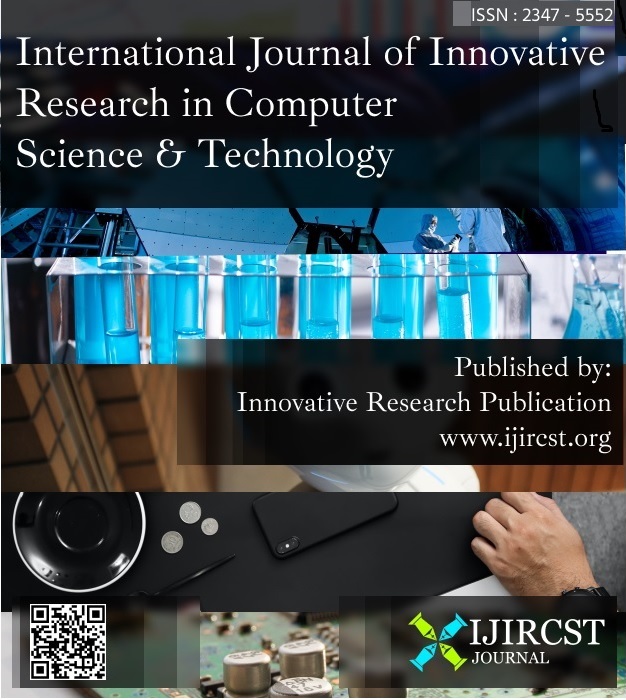Properties of Concrete on Adding Polypropylene Fibre and Polyvinyl Chloride Fibre
Keywords:
Concrete, Crack bridging, Fibre Reinforced Concrete, Cement Bags, Electronic WasteAbstract
Concrete is a structure material that can't be ignored indeed if it's weak in tension and lead to environmental problems. Properties of concrete can be modified using fibre in concrete. Using fibre from waste of plastic in concrete to some chance increases strength as well as durability of concrete and break disposal problems of plastic waste in terrain. From electronic waste Polyvinyl chloride lines (PVC) are used as fibre and from polypropylene (PP) quilting bag of cement are used as fibre in concrete. Both are used in 0, 0.26, 0.51, 0.76 and 1% by weight of cement in concrete. Total 90 samples conforming of 9 cells with 0% fibre, 36 cells with PP fibre of 0.26%, 0.51%, 1, 36% cells of PVC fibre of 0.26%, 0.51%, 0.76%, 1% and 9 cubes of mongrel and average values are calculated. Both Fresh and harden properties of polypropylene fibre reinforced concrete and polyvinyl chloride fibre reinforced concrete is determined and mongrel of optimum values calculated is used in a single blend and compressive strength is calculated. Results show that 0.76% and 0.51% is optimum value of polyvinyl chloride fibre RCC and polypropylene fibre RCC with 49% and 17.5% increase in concrete strength compared to normal concrete independently and can be used in a single admixture. The mongrel fibre RCC of optimum values of PPFRC AND EFRC show 56% increase in compressive strength. In hybrid fibre concrete with reinforcement, polypropylene fibre keeps cracks small and polyvinyl chloride fibre shows improvement in mechanical properties.
References
S. Abalansa, B. El Mahrad, J. Icely, and A. Newton, “Electronic Waste, an Environmental Problem Exported to Developing Countries: The GOOD, the BAD and the UGLY,” Sustainability, vol. 13, no. 9, Art. no. 9, Jan. 2021, doi: 10.3390/su13095302.
S. Hu, H. Cai, R. Hong, M. Li, and F. Yao, “Performance Test and Microstructure of Modified PVC Aggregate-Hybrid Fiber Reinforced Engineering Cementitious Composite (ECC),” Materials, vol. 14, no. 8, Art. no. 8, Jan. 2021, doi: 10.3390/ma14081856.
M. Małek, W. Łasica, M. Kadela, J. Kluczyński, and D. Dudek, “Physical and Mechanical Properties of Polypropylene Fibre-Reinforced Cement–Glass Composite,” Materials, vol. 14, no. 3, Art. no. 3, Jan. 2021, doi: 10.3390/ma14030637.
A. Meza, P. Pujadas, L. M. Meza, F. Pardo-Bosch, and R. D. López-Carreño, “Mechanical Optimization of Concrete with Recycled PET Fibres Based on a Statistical-Experimental Study,” Materials, vol. 14, no. 2, Art. no. 2, Jan. 2021, doi: 10.3390/ma14020240.
F. G. Cabrera-Covarrubias, J. M. Gómez-Soberón, C. A. Rosas-Casarez, J. L. Almaral-Sánchez, and J. M. Bernal-Camacho, “Recycled Mortars with Ceramic Aggregates. Pore Network Transmutation and Its Relationship with Physical and Mechanical Properties,” Materials, vol. 14, no. 6, Art. no. 6, Jan. 2021, doi: 10.3390/ma14061543.
J. F. Castillo-Lara et al., “Mechanical Properties of Natural Fiber Reinforced Foamed Concrete,” Materials, vol. 13, no. 14, Art. no. 14, Jan. 2020, doi: 10.3390/ma13143060.
F. A. Khan, K. Shahzada, Q. S. Ullah, M. Fahim, S. W. Khan, and Y. I. Badrashi, “Development of Environment-Friendly Concrete through Partial Addition of Waste Glass Powder (WGP) as Cement Replacement,” Civ. Eng. J., vol. 6, no. 12, Art. no. 12, Dec. 2020.
A. Hadj Mostefa and M. Slimane, “Study of Concretes Reinforced by Plastic Fibers Based on Local Materials,” Int. J. Eng. Res. Afr., vol. 42, pp. 100–108, Apr. 2019, doi: 10.4028/www.scientific.net/JERA.42.100.
I. A. Memon, A. A. Jhatial, S. Sohu, M. T. Lakhiar, and Z. H. Khaskheli, “Influence of Fibre Length on the Behaviour of Polypropylene Fibre Reinforced Cement Concrete,” Civ. Eng. J., vol. 4, no. 9, Art. no. 9, Sep. 2018, doi: 10.28991/cej-03091144.
N. Manasa and A. Mohan, “Experimental Investigation of Strength And Durability Properties Of Concrete With Granite Powder And Polypropylene Fibre,” vol. 7, no. 2279, 2018.
Faiz Mohammad Khan , Brahamjeet Singh. (2022). A Study on Stabilization of Subgrade by Using Recron Fibre In mountainous Soil, International Journal of Innovative Research in Engineering and Management (IJIREM), 9(2). 439-441,
Y. Dinesh and C. H. Rao, “Strength Characteristics of Fibre Reinforced Concrete Using Recycled Pet”.
M. Zakaria, M. Ahmed, M. M. Hoque, and S. Islam, “Scope of using jute fiber for the reinforcement of concrete material,” Text. Cloth. Sustain., vol. 2, no. 1, p. 11, Dec.
, doi: 10.1186/s40689-016-0022-5.
A. R. Bhat and A. Vikram, “Experimental Investigation on the Effect Polypropylene Fibre and E-Waste Fibre Embedded in Concrete,” Int. J. Innov. Res. Eng. Manag., vol. 9, no. 6, pp. 89–93, Dec. 2022, doi: 10.55524/ijirem.2022.9.6.15.
H. Jassim and A. Anwar, “Experimental Study of Polypropylene Fiber-Reinforced Concrete,” vol. 4, pp. 149–161, Jul. 2016.
V. Premur, A. Vucinic, D. Vujević, and G. Bedeković, “The Possibility for Environmental Friendly Recycling of Printed Circuit Boards,” J. Sustain. Dev. Energy Water Environ. Syst., vol. 4, pp. 14–22, Mar. 2016, doi: 10.13044/j.sdewes.2016.04.0002.
Downloads
Published
How to Cite
Issue
Section
License
Copyright (c) 2024 Aaqib Bashir

This work is licensed under a Creative Commons Attribution 4.0 International License.



